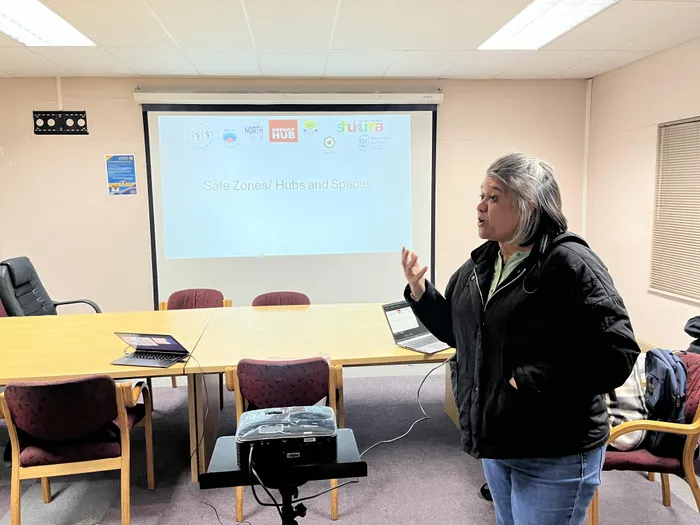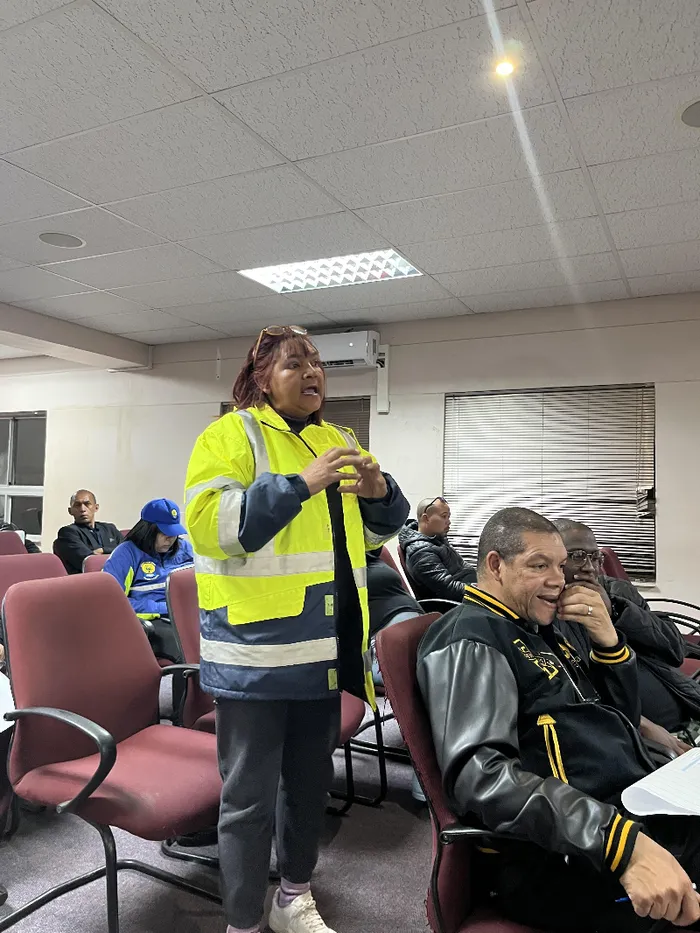Mitchell’s Plain stakeholders map safety and development priorities

Pauline Perez from the Violence Prevention Unit, Department of Health and Wellness,speaking at the meeting on Tuesday September 16.
Image: Marsha Bothma
Stakeholders in Mitchell’s Plain are finalizing the Safety and Development Plan and preparing to establish a dedicated forum to guide its implementation.
At a meeting held on Tuesday September 16, discussions focused on forming the forum and developing “safe zones” across the community, ("Mitchell’s Plain Safety and Development Forum to be formed with community-led criteria" Plainsman September 10;"Mitchell’s Plain safety plan moves forward with community input" Plainsman August 27 and "Stakeholders to refine Mitchell’s Plain safety plan ahead of budget deadline" Plainsman August 14)
Kurt Nefdt, spokesperson to MEC Anroux Marais for Police Oversight and Community Safety, said: “A proposal and motivation for the required budget will be submitted to the Provincial Treasury for approval.”
It was agreed that four initial safe zones would be established - one each in the Lentegeur and Strandfontein precincts, and two within the Mitchell’s Plain precinct, he said.
Pauline Perez from the Violence Prevention Unit, Department of Health and Wellness, said the presentation on safety hubs introduced the concept of creating safe hubs and safe zones.
In July, a multi-departmental pilot of a trauma-informed holiday programme in Portland and Westridge served as an example of a safe space, she said, ("Planet Youth: A collaborative approach to tackling crime and supporting young people in the Western Cape" Plainsman July 28)

Deidre Petersen, Eastridge Neighbourhood Watch chairperson, said: “Different areas have unique dynamics, so safe hubs should reflect local needs
Image: Marsha Bothma/CAPE COMMUNITY MEDIA
She said safe hubs and safe zones aim to create safe spaces and corridors to empower communities.
Ashwin Johnson, teacher and chairperson of the Portland Community Safety and Development Foundation, said: “Safe zones are broad, outdoor, and accessible to the community, complementing existing safe hubs such as schools, churches, mosques, and social facilities.”
Deidre Petersen, Eastridge Neighbourhood Watch chairperson, said: “Different areas have unique dynamics, so safe hubs should reflect local needs. Community centres could serve as hubs in some precincts while schools or streets could be chosen elsewhere.”
The forum will bring together representatives from various sectors, including schools, places of worship, police, neighbourhood watches, and community organisations. Meetings will take place weekly or every second week, adapting as the forum progresses.
It will also review budget proposals and project plans to ensure resources are allocated effectively. Community members and stakeholders will continue to receive updates as developments unfold.
Related Topics: